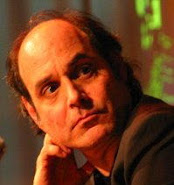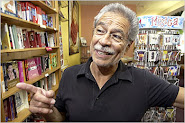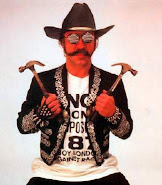PhD student at the University of Texas at San Antonio
Bilingual-Bicultural Department
Background Information on Dr. Greer
Dr. Pedro José Greer Jr. is a distinguished Cuban-American physician who was born in Miami, Florida. He was recently appointed assistant dean of academic affairs at Florida International University’s College of Medicine. The experience and vision he brings to the medical world is groundbreaking and inspirational. After the Cuban Revolution in 1959, Dr. Greer’s family settled in Miami, where he attended Christopher Columbus High School and the University of Florida. He earned his medical degree at the Pontificia Universidad Católica Madre y Maestra in the Dominican Republic. During his residency at Jackson Memorial Hospital, where he completed specialties in gastroenterology and hepatology, Dr. Greer encountered an unidentified homeless man in an isolated bed who was dying from tuberculosis in the mid-1980s. It seemed incredible to him that such a devastating disease was taking a life during modern times in Miami. This encounter, coupled with the spirit of his deceased sister, inspired Dr. Greer to start a free clinic for the homeless of Miami. He started offering free medical consultations in the Camillus House, a homeless shelter, and later after applying for several grants, was able to fully finance a clinic in which over 100 physicians currently serve.
Dr. Greer has cared for those who nobody wanted to look upon, much less lend a helping hand. His medical skills as well as his human touch have made to Miami a better place to live. Celebrated with many papal awards and the recipient of the MacArthur Genius Award, Dr. Greer continues his life long quest to better the world in which he lives.
Dr. Pedro José Greer Jr. is a distinguished Cuban-American physician who was born in Miami, Florida. He was recently appointed assistant dean of academic affairs at Florida International University’s College of Medicine. The experience and vision he brings to the medical world is groundbreaking and inspirational. After the Cuban Revolution in 1959, Dr. Greer’s family settled in Miami, where he attended Christopher Columbus High School and the University of Florida. He earned his medical degree at the Pontificia Universidad Católica Madre y Maestra in the Dominican Republic. During his residency at Jackson Memorial Hospital, where he completed specialties in gastroenterology and hepatology, Dr. Greer encountered an unidentified homeless man in an isolated bed who was dying from tuberculosis in the mid-1980s. It seemed incredible to him that such a devastating disease was taking a life during modern times in Miami. This encounter, coupled with the spirit of his deceased sister, inspired Dr. Greer to start a free clinic for the homeless of Miami. He started offering free medical consultations in the Camillus House, a homeless shelter, and later after applying for several grants, was able to fully finance a clinic in which over 100 physicians currently serve.
Dr. Greer has cared for those who nobody wanted to look upon, much less lend a helping hand. His medical skills as well as his human touch have made to Miami a better place to live. Celebrated with many papal awards and the recipient of the MacArthur Genius Award, Dr. Greer continues his life long quest to better the world in which he lives.

Dr. Pedro José Greer Jr.
Assistant Dean of Academic Affairs
Florida International University
College of Medicine
MacArthur Genius Award Honoree 1993
Assistant Dean of Academic Affairs
Florida International University
College of Medicine
MacArthur Genius Award Honoree 1993
Lesson 1
Lesson Plan Title- Dr. Greer’s Influence-
Past and Present
Learning Level- Grade level 6-12
Past and Present
Learning Level- Grade level 6-12
TEKS standards addressed in this lesson-
(2) History The student understands the contributions of individuals and groups from various cultures to selected historical and contemporary societies. The student is expected to:
(A) explain the significance of individuals or groups from selected societies, past and present; and
(B) describe the influence of individual and group achievement on selected historical or contemporary societies.
(11) Communication The student delivers the product electronically in a variety of media, with appropriate supervision. The student is expected to:
- publish information in a variety of ways including, but not limited to, printed copy and monitor displays
Pre-Instruction or Prerequisite Knowledge/Skills-
(2) History The student understands the contributions of individuals and groups from various cultures to selected historical and contemporary societies. The student is expected to:
(A) explain the significance of individuals or groups from selected societies, past and present; and
(B) describe the influence of individual and group achievement on selected historical or contemporary societies.
(11) Communication The student delivers the product electronically in a variety of media, with appropriate supervision. The student is expected to:
- publish information in a variety of ways including, but not limited to, printed copy and monitor displays
Pre-Instruction or Prerequisite Knowledge/Skills-
Basic Internet search capabilities and basic writing skills
Lesson Duration-
2-3 sessions in computer lab, 1-2 hours each
Peer writing/revising sessions, optional
Learning Location-
Computer Lab, classroom
Materials-
§ At least one copy of Waking Up in America by Dr. Pedro José Greer, Jr.
§ Pictures of homeless people
Learning Objectives-
§ Students will be able to explain the significance of Dr. Greer’s contributions to Miami’s current medical facilities for homeless and underprivileged residents.
Students will be able to describe past events in Dr. Greer’s life that led to his personal achievements as well as his contributions to present society.
Procedure-
1. Distribute pictures of homeless people to students. Ask students to discuss what needs the people in these pictures have that are not being met.

2. Read-Aloud a section or chapter from Waking Up in America. Briefly introduce the author and have students discuss their reactions from the selection (in partners or whole class).

3. Explain that the class will be learning about an influential Cuban American doctor whose work has significantly influenced medical treatment of underprivileged individuals in Miami.
4. Ask high level thinking questions, such as the following:
- Who has Dr. Greer affected through his medical work?
- What led Dr. Greer to start serving the homeless?
- When did Dr. Greer open his first clinic for the homeless in Miami?
- How did Dr. Greer obtain the funds necessary to open a free clinic?
5. Describe the three choices for final contributions to class after research is complete. Any choice will be presented in the form of Power Point presentation:
a) Students may choose to read Dr. Greer’s book and present the highlights from each chapter.
b) Students may choose to research Dr. Greer’s life using online resources, including past events that led to his contributions to society (timeline).
c) Students may highlight a significant event in Dr. Greer’s life by creating a play script between two or more characters with a detailed description of the setting.
6. Specify that work should be accomplished individually, but peer revision of work is encouraged.
7. Take students to computer lab or demonstrate with an LCD projector in class the basic process of constructing a Power Point presentation. Have students experiment with different designs and formats before beginning research.
8. Students research Dr. Greer’s life or begin reading book.
9. Allow enough time in class for development of research and presentations.
Evaluation-
Students share their Power Point presentations with the class. Assess their learning with an appropriate presentation and/or writing rubric.
See rubistar.4teacher.org for specific writing rubrics.
See rubistar.4teacher.org for specific writing rubrics.

Lesson 2
Lesson Plan Title- Career pathways
Learning Level- Grade level 6-12
Learning Level- Grade level 6-12
TEKS standards addressed in this lesson- Knowledge and skills
(2) The student knows how to locate, analyze, and apply career information. The student is expected to:
(A) access career information using print and on-line
resources to complete an educational and/or training plan
for a career pathway;
(B) access career information using interviews with business
and industry representatives to create a career resource file
Pre-Instruction or Prerequisite Knowledge/Skills-
(2) The student knows how to locate, analyze, and apply career information. The student is expected to:
(A) access career information using print and on-line
resources to complete an educational and/or training plan
for a career pathway;
(B) access career information using interviews with business
and industry representatives to create a career resource file
Pre-Instruction or Prerequisite Knowledge/Skills-
§ This lesson should follow lesson on Dr. Greer’s Influence
§ Practice with question formation for interviews
Lesson Duration-
1 hour
time needed to conduct brief interview with
medical professional
Learning Location-
Classroom, computer lab, medical work environment
Materials-
§ Computers with Internet connection and
printer/paper
§ Resources that connect them to health care professionals.
§ Digital cameras, if available and able to be checked out by students.
Learning Objectives-
§ Students will be able to access career information using print and on-line resources to complete an educational and/or training plan for a career pathway.
§ Students will be able to access career information using interviews with business and industry representatives to create a career resource file.

Procedure-
1. Share information they have discovered about Dr. Greer’s career path into the health care field. Activate background knowledge by inquiring about Dr. Greer’s academic training that enabled him to become a doctor. Where did he study/train? What type of planning was necessary? What sacrifices or financial obligations did his training entail?
2. Facilitate students’ opportunities for interviews in the medical field. Interviewees can be doctors their families know, including their own dentist, eye doctor, doctors who helped in the delivery of themselves or their siblings, clinical nurses, etc.
3. Have students brainstorm questions that would be appropriate to ask a health care professional concerning their career path and job responsibilities and standards. Share as many ideas as possible during class. Students may partner with 2-3 other classmates to formulate questions and then share out. Also have students write of list of possible professionals they know or their family knows that they might be able to interview.
4. Instruct students to choose 4-5 questions they think will be the most helpful in understanding the career path of the person they are interviewing. The questions should help illicit practical and specific information concerning the specific area of expertise of each professional.
5. Interviews can be conducted by phone, email, or in person. Personal interviews are preferred, as the work environment can also be observed. Digital pictures are highly encouraged (may be offered as extra credit) as they will help class visualize work environment and participant. Students will be given 2-3 weeks to conduct interviews and then share their experiences in class.
Evaluation-
Information gleaned through interviews should be shared in the form a 1-2 page typed paper. The content may be shared in dialogue or essay form. Assess papers using an appropriate writing rubric and/or self or peer evaluation form. See rubric below created through rubistar.4teacher.org
Resources:
Balmaseda, Liz. "December 2002 Hispanic of the Year." Hispanic Magazine.Com. 07 Sept. 2007
http://www.hispaniconline.com/magazine/2002/dec/CoverStory/index.html
Greer, Jr., Dr. Pedro José, and Liz Balmaseda. Waking Up in America. New York: Touchstone, 1999. 11-197.
Balmaseda, Liz. "December 2002 Hispanic of the Year." Hispanic Magazine.Com. 07 Sept. 2007
http://www.hispaniconline.com/magazine/2002/dec/CoverStory/index.html
Greer, Jr., Dr. Pedro José, and Liz Balmaseda. Waking Up in America. New York: Touchstone, 1999. 11-197.
"Local Leadership: Profile: Dr. Pedro Jose Greer, Jr." Local Leadership Online. 09 Sept. 2007
“Winner Profile” VolunteerResource.org. 26 Sept.
http://www.pointsoflight.org/awards/prescommunityvol/winner_details.cfm?ID=850
Perspectives in Health - The magazine of the Pan American Health Organization
Volume 10, Number 1, 2005







No comments:
Post a Comment